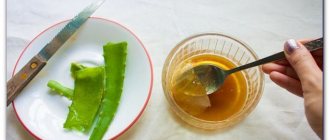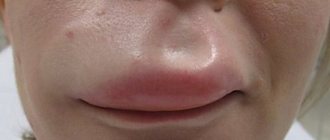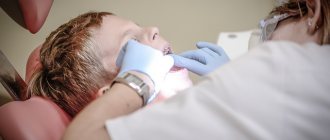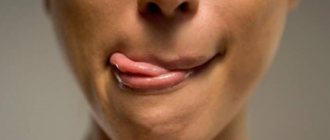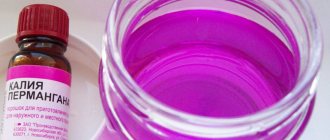Price
Allergology-immunology
| Name of service | Price |
| Consultation with an allergist-immunologist | 2 500 ₽ |
Advantages
- The latest, constantly updated equipment
- Interest-free installments for all services
- Online consultations with an ENT doctor
- Visit of an ENT doctor to your home
- Friendly and qualified staff
- 24/7 ENT assistance
A food allergy is an abnormal reaction of the immune system that occurs shortly after eating a certain food. Even small amounts of an allergic food can cause signs of a food allergy, such as digestive problems, swelling and skin marks. In some people, food allergies can cause serious symptoms or even a life-threatening reaction called angioedema (swelling of the airways) - also known as Quincke's edema.
You should not tolerate a condition that can significantly reduce your quality of life. Contact a professional allergist who will determine the source of your food allergy and give competent clinical recommendations.
Symptoms of food allergies
Manifestations of food allergies usually develop within a few minutes to two hours after consuming the trigger food. In more rare cases – up to several days.
The most common symptoms of food allergies include:
- discomfort in the oral cavity;
- skin form of food allergy: redness, rashes in the form of small blisters, itching;
- swelling of the lips, face, tongue and throat (mostly) or other parts of the body (less often);
- difficulty swallowing;
- wheezing or shortness of breath;
- nasal congestion or difficulty breathing;
- abdominal pain, diarrhea, nausea or vomiting;
- dizziness, feeling unwell;
- sneezing or itchy eyes (allergic conjunctivitis).
Prevention measures
You can prevent the formation of lip edema by following the preventive recommendations of specialists:
- strengthen the immune system - adhere to proper nutrition, avoid stress and emotional outbursts, exercise regularly and moderately;
- make a choice of a cosmetologist and dentist, taking into account not only the prices for their services, but also the reputation of the clinic, the availability of certificates, and customer reviews;
- if there is a wound on the lip, then do not touch it with dirty hands;
- If you have allergies, choose decorative cosmetics and skin care products with special care;
- avoid hypothermia or overheating;
- drink enough water every day - at least one and a half liters per day;
- include in your diet foods rich in vitamins B6, B12, and C;
- after cosmetic manipulations, follow all instructions and recommendations of the doctor who performed the procedure;
- undergo medical examination at least once every 12 months to exclude hidden internal pathologies.
Swelling of the lips may indicate the development of serious pathologies, so if it begins suddenly and spreads rapidly or does not disappear even after therapy, you should seek qualified medical help. Complete treatment of the disease that caused lip swelling will give the desired result.
Angioedema - or how food allergies manifest themselves in the worst way?
Acute food allergies can cause a serious allergic reaction called angioedema. Prompt treatment is critical for this condition. Without treatment, angioedema can cause asphyxia, coma, or even death.
Life-threatening signs of a food allergy:
- tongue swelling;
- a feeling of a lump in the throat that makes it difficult to breathe;
- problems swallowing or speaking;
- a sharp drop in blood pressure;
- rapid pulse;
- dizziness, lightheadedness, or loss of consciousness
With such symptoms, you should urgently call an ambulance.
Symptoms of pathology
The primary signs of lip cancer are lumps or ulcers on the surface of the anatomical area in question. Some patients complain of moderate itching, which intensifies at night or during meals. In the absence of treatment, the size of the primary lesion increases, and the soft tissues lose their original shape. Acute pain syndrome does not allow the patient to eat solid food. The upper and lower lips do not close together, and drooling appears. Cosmetic defects intensify, the tumor process affects the mucous membrane of the oral cavity, gums, cheeks and tissues of the lower jaw.
An external examination of the affected area allows the oncologist to see a dense formation with a grayish-brown surface covered with ulcers and cracks. In the later stages of lip cancer, signs of weeping appear and the tumor begins to bleed. Several seals can be combined into one large unit. Invasion of the primary lesion into bone tissue often leads to destruction of the lower jaw.
Food allergies in children
Childhood food allergies affect 6 to 8% of children under 3 years of age. Often, food allergies in children go away without treatment as they grow older, but you should not wait for this to happen and neglect medical help. Food allergies in a child can affect his growth and development, so in any case you should consult a doctor.
A food allergy in a newborn may manifest itself not as rashes on the body, but as excessive and inconsolable crying, even if the child is fed and does not need to change diapers. This occurs due to colic in the abdomen.
The following foods most often cause an allergic reaction in children:
- eggs;
- milk (if a baby has a food allergy to any type of milk, as well as to baby food and formulas that include milk, it is imperative to include other foods containing calcium in his diet);
- soy;
- wheat;
- peanut.
Traditional medicine for swollen lips
Swelling on the lips is rarely expected; rather, it takes you by surprise. It’s good if your home medicine cabinet contains pharmaceuticals suitable for each specific case. The victim probably has the opportunity to go to both a doctor and a pharmacy. But what to do when your lip is swollen at night? It is advisable to react to damage as quickly as possible; you have to use improvised, “folk remedies”.
Traditional medicine suggests solving the problem of swollen lips as follows:
- aloe juice - finely chop or crush a large leaf of an adult aloe (over 3 years old) and squeeze out the juice, soak a cotton pad in the juice (or you can wrap the aloe pulp in gauze) and apply to the swelling for 15-20 minutes;
- a mixture of turmeric, Fuller's earth and water - the powders must be taken in equal quantities and diluted with a small amount of water to a paste-like state; apply to the swelling for 15-20 minutes, then rinse with warm running water;
- baking soda - form a paste-like substance from baking soda and a small amount of water and apply it to the damaged area of the lips; after 10 minutes, rinse with cold water;
- honey - apply a thick layer of honey onto a cotton pad, apply to the swollen area for 20 minutes, rinse with cold water; repeat several times a day.
Types and causes of food allergies
Food allergies occur because the immune system perceives harmless substances in certain foods as harmful.
In the most common type of food allergy, an antibody known as immunoglobulin E (IgE) mistakenly targets a specific protein found in food as a threat. Immunoglobulin is involved in the release of a number of chemicals that form an allergic reaction, the most serious of which is histamine. It causes most of the typical symptoms of an allergic reaction. For example, histamine:
- causes small blood vessels to dilate, causing food allergies in the skin (the skin becomes red and swollen);
- increases the amount of mucus produced by the nasal mucosa, which causes sneezing, itching and burning.
There is another type of food allergy known as non-IgE-mediated food allergy. It is more difficult to diagnose because there is no test that can accurately confirm it. This type of food allergy also manifests itself on the body and causes problems with the digestive system (heartburn, diarrhea, nausea). In infants, non-IgE-mediated food allergies can also cause diarrhea and reflux, when stomach acid leaks into the throat.
Food allergies in adults are most often caused by the following foods:
- nuts – walnuts, almonds, peanuts, pistachios;
- fish;
- seafood - shellfish, crabs, lobsters and shrimp;
- celery;
- Gluten is an allergy to food protein found in grains;
- mustard;
- fruits and vegetables - usually food allergies in adults to them occur only on the skin around the mouth;
- meat – some people are allergic to only one type of meat, others are allergic to different types; the main manifestation is food allergy on the face;
- alcohol;
- non-steroidal anti-inflammatory drugs - aspirin or ibuprofen.
Diagnostic procedures
The diagnosis is made to the patient taking into account complaints, data from physical methods of examining the lip, oral mucosa using a magnifying glass, as well as the results of instrumental diagnostics. Review the results:
- Ultrasound of the lips and neck area;
- X-rays of the lower jaw;
- cytological examination of fingerprint smears, punctate and scrapings from the primary tumor and nearby lymph nodes.
An extremely informative diagnostic method is the innovative PET-CT (positron emission tomography) method. It is based on the use of radiological methods and the capabilities of the latest computer technologies. This makes it possible to identify micrometastases and assess the response to therapy already administered, and, if necessary, choose the optimal treatment route.
Differential diagnosis should also be carried out with candidiasis, syphilis, and herpetic manifestations. In most cases, identifying a neoplasm is not difficult.
Diagnosis of food allergies
The main method of identifying the cause of food allergies is keeping a food diary for several weeks, which allows you to identify the causative factor and significantly narrow the range of suspicious foods. Food allergy tests are always just an additional tool and are not a basis for excluding a product from the diet.
Testing for food allergies can vary depending on the type:
- if symptoms develop quickly (IgE-mediated food allergy), a skin test and blood test will be performed;
- if symptoms develop more slowly (non-IgE-mediated food allergy), a diet that excludes certain foods will be prescribed to identify the allergen.
During a food allergy skin test, drops of standardized food extracts are applied to the skin. The skin is then pierced with a small lancet, which allows the allergen to come into contact with immune system cells. Itching, redness and swelling indicate a positive reaction.
A food allergy blood test measures the amount of allergic antibodies in the blood.
The food allergy diet eliminates foods that are believed to cause the allergic reaction. Typically restrictions are imposed for 2-6 weeks. These products are then reintroduced. If symptoms disappear without trigger foods but return when they are reintroduced, this indicates a food allergy or intolerance to those foods.
Do not attempt a food elimination diet on your own without discussing it with a qualified allergist.
Prognostic factors
Prognosis (outcome) factors for lip cancer are:
- prevalence of the process (size of the primary tumor, presence of metastases);
- clinical and anatomical form of cancer growth (exophytic forms proceed more favorably);
- morphological type of cancer (the non-keratinizing type is more aggressive);
- nature of tumor growth (primary or recurrent);
- age (patients under 40 years of age have a more malignant course).
The prognosis for lip cancer is generally favorable.
A worsening prognosis is associated with locally widespread infiltrative growth and significant regional and distant metastasis.
Treatment of food allergies
Therapy for food allergies consists of two components: elimination therapy (excluding causative foods from the diet) and drug therapy for manifestations of the disease.
There are 2 main types of medications that are prescribed to relieve the symptoms of an allergic reaction:
- Antihistamines – used to treat mild to moderate allergies. They work by blocking the production of histamine, which is responsible for initiating an allergic reaction. Avoid drinking alcohol after taking antihistamines as it may cause drowsiness.
- Corticosteroids are stronger drugs. They inhibit the production of substances that promote inflammation, reduce capillary permeability, which eliminates swelling.
When asked how to treat severe food allergies (anaphylaxis), the answer is adrenaline. Adrenaline constricts blood vessels and opens the airways to ease breathing difficulties. This procedure should only be performed by qualified healthcare professionals.
Broken lip: what to do and how to remove the swelling?
Many people face the problem of a split lip. This can happen after a fall or blow. Often, not only a hematoma appears at the site of a bruise, but swelling also occurs. Many people would immediately like to know what to do if they have a broken lip in order to get rid of the swelling.
Note that a bruise can cause many serious consequences if help is not provided in time.
Before we talk about what to do if an adult or child has a broken lip, we will tell you what measures are prohibited from being taken. Let's look at them:
- You should not apply anything warm, as well as ointments that have a warming effect. Such drugs can lead to increased swelling.
- Do not use cosmetics to hide the swelling. This can lead to infection in the wound.
- You should not eat food immediately after you have a split lip. During the recovery process, you should not consume too hot or cold foods.
- During the treatment period, give up alcohol and cigarettes.
- Do not touch your lips with your hands or bite them. This way you can easily get infected.
- Avoid direct sunlight and kissing.
Usually, if a lip or other part of the body is broken, it is recommended to put ice on the bruised area. This is done in order to relieve pain and, of course, relieve swelling.
This method can be used if, apart from swelling, there are no various cuts and bleeding. Remember that pure ice should not be applied to sensitive tissue.
If you apply ice, is it possible to get rid of swelling in a short period of time? Unfortunately no. The swelling can be removed in this way only in a few days. Apply a compress every three hours for ten minutes.
How to relieve swelling with folk remedies? If urgent medical intervention is not required, then these methods can be used. We will now consider popular means:
- Tea lotions. First, place a tea bag in the water. Afterwards, squeeze it out a little. Just remember that the bag should not be hot. Hold this tea lotion for a couple of minutes on the injured area.
- Aloe juice. This tool has unique capabilities. Therefore, aloe juice is used not only in folk medicine, but also in traditional medicine. So how to use such a tool? You need to take a cotton swab and moisten it with aloe juice. You need to keep the lotion on the sore spot for about fifteen to twenty minutes.
- Celandine lotions. First you need to squeeze the juice out of the grass. Then soak a tampon in it. Lotions with fresh juice should be applied several times a day.
If you have a broken lip and you trust traditional medicine, then the following tips are for you. So what to do in such cases? To relieve swelling, you can use the following medications:
- Bodyaga. It is better to buy it in gel form and rub it in an unlimited number of times throughout the day.
- Ointment "Rescuer". It will improve the overall condition of the lip and also disinfect it.
- Various ointments (Ketonal, Nurofen-gel, Troxevasin and other similar medications).
- Lotions with lead water. The product must be refrigerated before use. Lead water has an analgesic effect. In addition, the product quickly solves the problem of swelling.
Of course, such an injury looks terrifying. Many mothers panic. But you shouldn't do this. We need to act calmly. What to do?
- First of all, wash your hands (yours and your child’s). This is done so as not to accidentally introduce an infection into the wound.
- To eliminate a possible infection, use hydrogen peroxide. Wipe the affected area with a cotton swab containing this product. You should not use iodine and brilliant green for processing. Not only do they cause severe pain when applied to a wound, but they can also cause burns. In addition, iodine can also provoke bleeding from a wound, as it causes blood flow.
- You can use honey as an antiseptic if you have a split lip. The baby should like this folk remedy. Despite the fact that children perceive honey as a delicacy, it has many beneficial properties, including antibacterial. You can also use sea buckthorn oil and propolis-based ointment for this purpose. Of course, it is advisable to apply the product before bed so that the baby does not quickly eat it.
- If your lip is broken from the inside, you can use the drug Miramistin. If a similar problem occurs in a very young child, then you should act a little differently. You need to moisten a cotton swab in this product and wipe the wound with it. Older children, of course, will be able to rinse their mouths with this medication on their own. Chamomile decoction can also be used for this purpose. It perfectly disinfects and heals the wound, and also stops bleeding.
- After the lip has been cleaned, it can be examined. Most likely, you will notice swelling and edema on it. What to do next? You can use ice or a spoon that you have kept in the freezer for a while in advance. This method will also help stop the bleeding.
- If upon examination you see that the wound is quite deep, then, of course, you need to urgently go to the trauma department. Most likely, the doctor will suggest that you get stitches.
After first aid, of course, you should continue to treat the child. During the healing process, the lip will become crusty. You need to make sure that the baby doesn’t chew it. Otherwise, the healing process will be delayed, and it is quite possible that the wound will become infected again.
You also need to lubricate your lip with an emollient. Propolis ointments and honey are suitable for these purposes. If the wound is inside, then rinsing with chamomile will be useful.
Hematoma and swelling on the lip rarely pose serious health problems or lead to any dangerous consequences. These symptoms are primarily an aesthetic nuisance, but may be accompanied by pain and discomfort.
There are several ways to quickly remove a bruise from your lip so that within a few days there will be no trace left of it. These can be both pharmaceutical drugs and folk remedies.
The main rule is that it is better to start treatment before extensive swelling appears on the face.
A lump on the lip is an ordinary hematoma. It is formed when small vessels are damaged and the subsequent development of inflammation. You can get such an injury at home or during cosmetic procedures. There are several of the most common causes of bruising in this area:
- bruise - a consequence of a domestic or sports injury, a fall or a blow from a hard object;
- tissue inflammation after injection is one of the side effects of cosmetic procedures for lip augmentation, which is warned in advance;
- after a kiss - the cause of this phenomenon may be weakness of the blood vessels.
The appearance of hematomas, including on the face or lip, is a common situation for a child. During active play, children often fall and get injured. In addition, they have weaker blood vessels, and damage to their walls leads to the formation of lumps. At a young age, while the child’s coordination of movements is not sufficiently developed, bruises and abrasions appear constantly.
For an adult, if the lip is swollen from a blow or for any other reason, it is important to treat it with special ointments in a timely manner.
Extensive swelling can be uncomfortable, painful, and attract attention from others. However, simply covering it up with foundation is not enough. If swelling has time to form, the lip can significantly increase in size and become numb.
First aid
Removing swelling from the lip is much more difficult than preventing its occurrence in time. One of the simplest recommendations is to apply a cold compress immediately after the blow. This method allows you to narrow the blood vessels and thereby reduce the release of fluid from them.
In addition, using cold can stop bleeding from small capillaries. Ice or any frozen product will work for this procedure, but it is better not to apply it directly to the skin.
It is recommended to wrap pieces of ice in a cloth - this way it will not cause frostbite.
There are several methods that are not suitable as first aid for bruises in the face and lips:
- warming ointments - such drugs will increase the release of blood from the vessels and provoke the appearance of extensive bruising;
- iodine mesh - despite the fact that this drug is used to resolve hematomas on sensitive skin of the lips, it can cause allergies or chemical burns;
- It is not recommended to use cosmetics during the treatment period - if you cover up the bruise with tinting agents, this may worsen the symptoms.
If the wound bleeds profusely, it is better not to try to heal it yourself. Modern surgical methods make it possible to apply a suture in such a way that there are no scars left at the site of injury. Traces of self-healing of skin damage will be visible after a long time.
The basic principle of treating bruises on the lip is anti-inflammatory ointments and compresses. In the first few days, until the damaged vessels are completely restored, you can only use cold compresses or purchase a cooling agent. Then use warming ointments or those that stimulate blood circulation.
However, it is worth remembering that the skin of the lips is very sensitive, and it is necessary to monitor its reaction to such medications.
There are several remedies that can be used to treat a hematoma on the lip:
- Rescuer is a plant-based ointment that quickly relieves inflammation, accelerates the resorption of bruises and has a disinfecting effect;
- Heparin ointment - thins the blood and promotes its outflow from the site of injury, thereby eliminating hematomas;
- Comfrey ointment is a natural remedy for bruising and swelling, but is not applied to damaged skin;
- Lyoton, Lyogel and analogues are heparin-based products.
Small hematomas can be cured in a few days.
It is better to apply medicinal ointments, including at night, in the form of a compress. Improvements will be noticeable the next morning. Balls in the lip area should not appear after injections; minor swelling is allowed. However, within 2 weeks the situation can be corrected by applying ointments daily.
Food allergies: recommendations to avoid
The most effective prevention of food allergies is to eliminate foods that act as allergens from the diet.
It is important to always check the ingredient list on all pre-packaged foods and drinks. Pay attention to “may contain” labels, such as “may contain traces of peanuts.”
Be careful with products labeled as vegan. There is no official definition of veganism, which means that products under such brands are not always completely free of animal substances. If you have food allergies to milk, eggs, fish, crustaceans or shellfish, carefully read the ingredient lists of vegan products. Pay attention to "may contain" warning labels.
The Ear, Nose and Throat Clinic in Moscow treats food allergies in adults and children. You can also get tested for food allergies with us.
Seeing a doctor in a timely manner will help maintain your health.
Don't delay treatment, call right now. We work around the clock. tel. (24 hours a day)
Survival prognosis
The prognosis for cancer is determined by the 5-year survival rate. It refers to the percentage of patients alive five years after they were diagnosed with cancer. First of all, five-year survival depends on the stage. Factors such as the resection margin after surgery, the degree of differentiation of tumor cells (how much they differ from normal ones), age, health status of the patient, and concomitant diseases also play a role. For cancer of the upper lip, the prognosis is slightly worse than for cancer of the lower lip.
Five-year survival rates for different stages of malignant tumors of the lips:
- Stage 1 — 96%.
- Stage 2 — 83%.
- Stage 3 — 57%.
- Stage 4 — 48%.
The international clinic Medica24 uses the most modern methods of treating head and neck cancer. We have experienced oncologists and accept patients with any stage of the disease. Make an appointment with our doctor.
The material was prepared by the deputy chief physician for medical work of the international clinic Medica24, candidate of medical sciences Sergeev Petr Sergeevich.
Sources:
- Sultanbekov R.A., Dzhunushaliev Kubanychbek Kashymbekovich, Sarzhevskaya M.P., Aitbaev E.S., Minenkov G.O. Treatment of cancer of the lower lip // TMG. 2021. No. 1.
- Ivanov S. A., Okuntsev D. V., Ivanova O. V. Results of radiation treatment of primary non-metastatic cancer of the lower lip // Problems of health and ecology. 2011. No. 1 (27).

